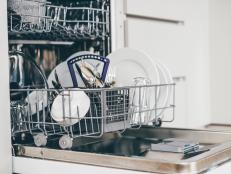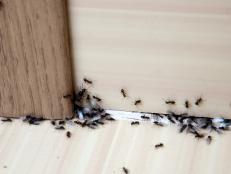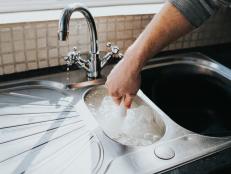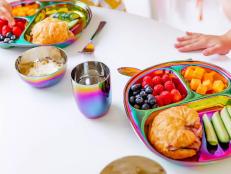How A Food Safety Expert Cleans Her Kitchen
When was the last time you cleaned these spots in your space?

BrianAJackson/Getty Images
Since 1999 I have been teaching food safety. I started at the well-known New York Restaurant School to future chefs and moved onto Teachers College, Columbia University and the Hunter School of Urban and Public Health to future registered dietitians. What all my students always wanted to know is how I clean my own kitchen — especially since I know all the rules of food safety and how pathogenic microorganisms can potentially make people sick. Here’s how I make sure my kitchen is clean.
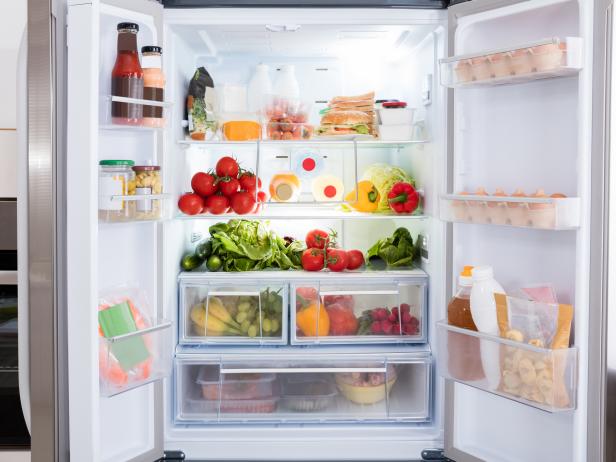
AndreyPopov/Getty Images
The Refrigerator, Freezer and Pantry
I am obsessed with the cleanliness, especially, of my refrigerator. I do not like when I have spoiled food or anything with mold in there. Each week before I go food shopping, I go through my refrigerator and toss any leftovers that have been in there for more than four days, any spoiled food and clean up any spills. I also go through my crisper drawers – one holds vegetables and one holds bread. I toss any vegetables that have spoiled. I use up any leftover ones that day in omelets or I roast them for dinner. Most vegetables have a shelf life longer than four days, depending on the type, but by looking at what I have in my fridge, I minimize food waste.
I go through my freezer less often, but still make sure it is clean and free of pests (my worst nightmare!). But when pests do come around, I have a pest control company to manage ants. I clean my freezer about once a month. I re-organize so I can see everything that is in there and make a plan to use food I froze that is coming close to the two-month mark (the recommended maximum amount of time a food can be frozen, and then reheated).
I clean my pantry every few months. I go through and clean any spills, make sure opened items are sealed properly in a re-sealable bag and toss anything spoiled.
Dishes
With several teenagers in the house, dirty dishes certainly pile up. In a perfect world, I would make sure those dishes are washed by hand or placed in the dishwasher as soon as they are done being used. However, with my kids eating late or running off to school there sometimes isn’t the time. As such, I make sure the dishes are done at least once a day, the bottom of my sink is cleaned thoroughly and the garbage disposal is run.
Garbage
As I cook every day, garbage and recyclables accumulate. I take those out as soon as they are full to minimize odors and minimize my dogs going for a dumpster dive (and of course, this helps minimize pests, too). I also clean out the bottom of the can regularly with a mixture of bleach and water. You don’t want to overuse the bleach as it will leave a bad odor. The Center for Disease Control and Prevention (CDC) recommends a water and bleach ratio of by 5 tablespoons (1/3 cup) of bleach per gallon of room temperature, or 4 teaspoons of bleach per quart of room temperature water, to clean properly.
Other Spots
The floor is swept daily and washed every week. Crumbs left on the floor can attract pests. I also clean equipment like my stove after every use, the inside of the microwave about weekly (spills do get cleaned regularly) and my countertops daily. To clean my stove, I wipe it down with a damp cloth and then wash the entire surface with a non-abrasive sponge and dish soap. If the surface is very greasy, then I use a 1-to-2 baking soda to vinegar mixture and let it sit for about 15 minutes before wiping it off. For the microwave, I wipe up spills with a damp cloth or use equal parts white vinegar to water and place in a spray bottle. To clean your microwave, you can do the following:
- Fill a microwave-safe bowl with water and add two tablespoons of white vinegar.
- Microwave the bowl for at least three minutes.
- Leave the bowl in the microwave for at least 3 minutes to allow the mixture to destroy the bacteria. Remove the bowl and discard the water.
- Remove the turntables and clean the inside of the microwave with dish soap, warm water and a sponge or cleaning cloth.
Side towels (used to handle hot pots or clean up countertop spills) and hand towels (used to dry clean hands) are also washed regularly – maybe once a week or more, if needed.
Cutting Boards
Cutting boards are one of the ways you can transfer pathogenic microorganisms like bacteria from one surface to another through cross-contamination. First, I will never cut raw chicken and then use the same knife and cutting board to slice fresh vegetables. Instead, I have numerous cutting boards (about five). Mine can be run through the dishwasher as they are synthetic. My wooden cutting boards I save for a cheese and cracker tray I serve to guests and clean that by hand with soap and water using a stiff-bristled brush. If any of my cutting boards have too many grooves or just look too warped, I discard them.
Other equipment that does get washed down regularly include the coffee machine and any standing equipment on my counters that are used regularly – like my blender for morning smoothies.
To help minimize the risk of foodborne illness and minimize pests getting into your home it’s important to keep a clean and sanitized kitchen from the floor to storage areas to equipment that is being used.
Related Content:
























